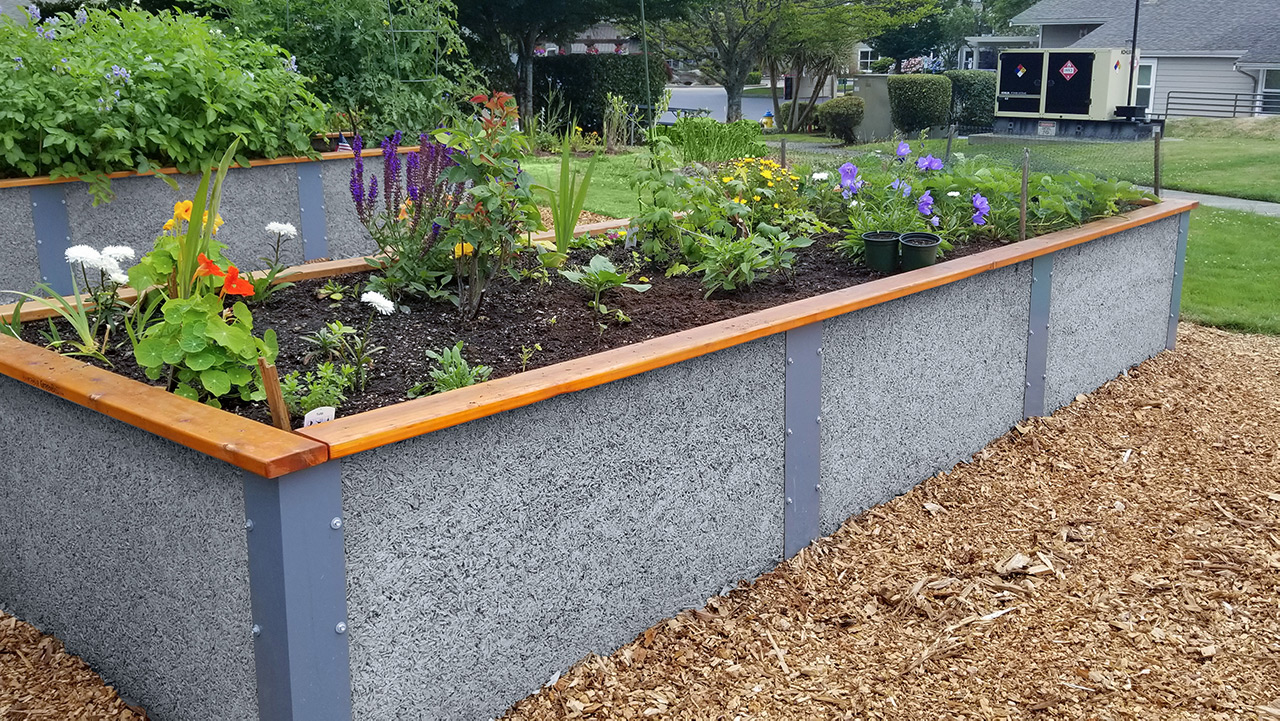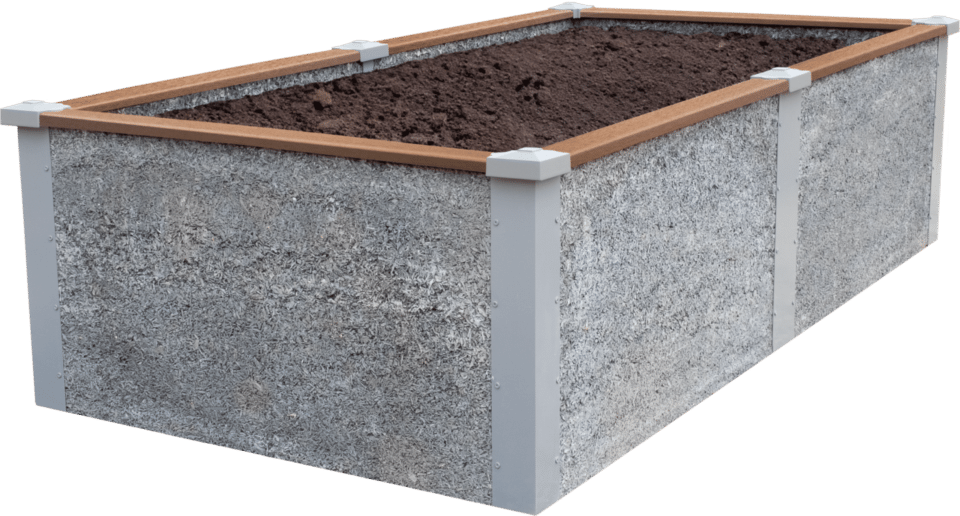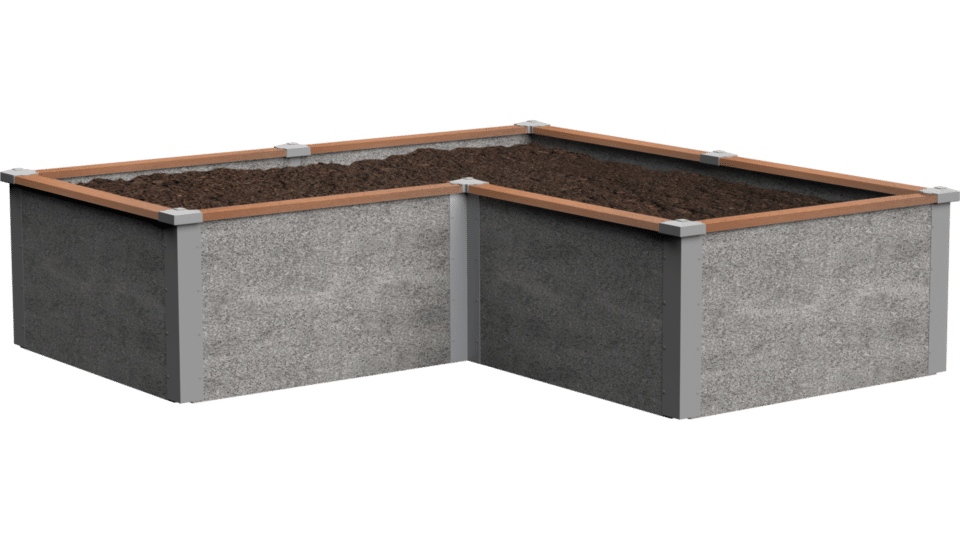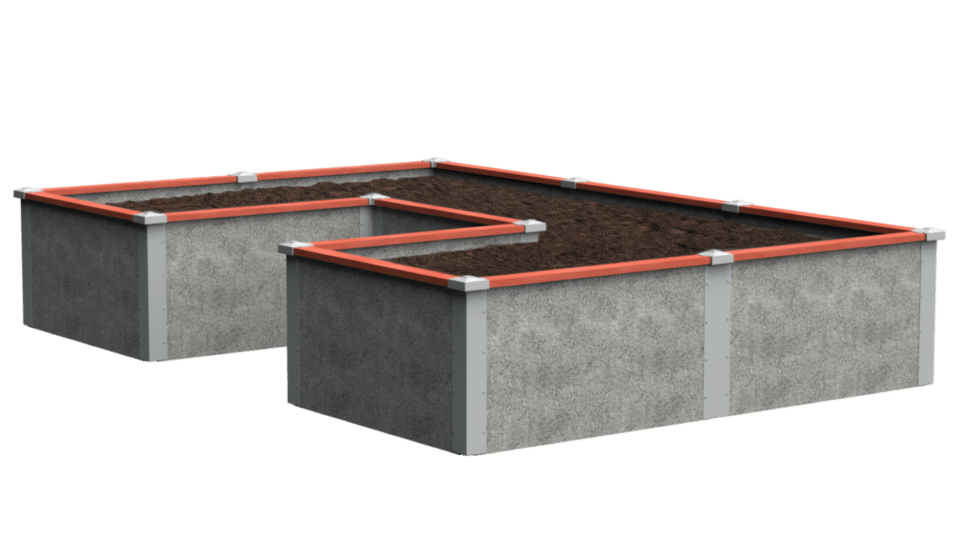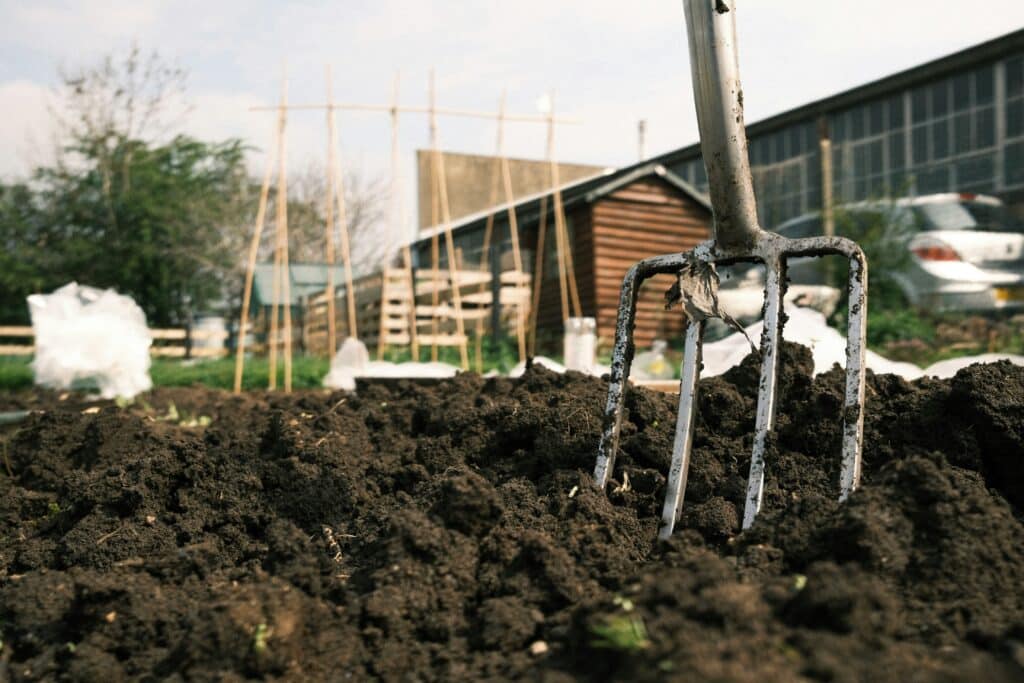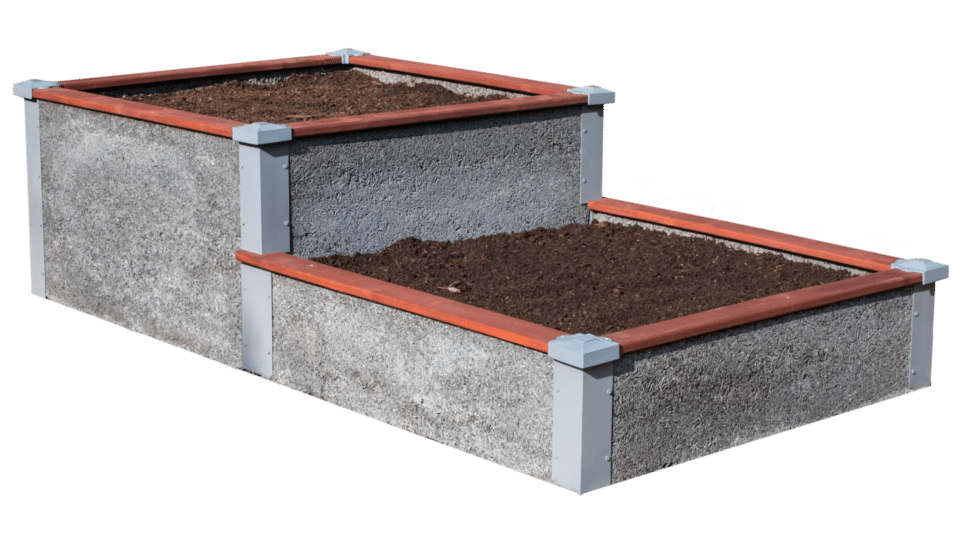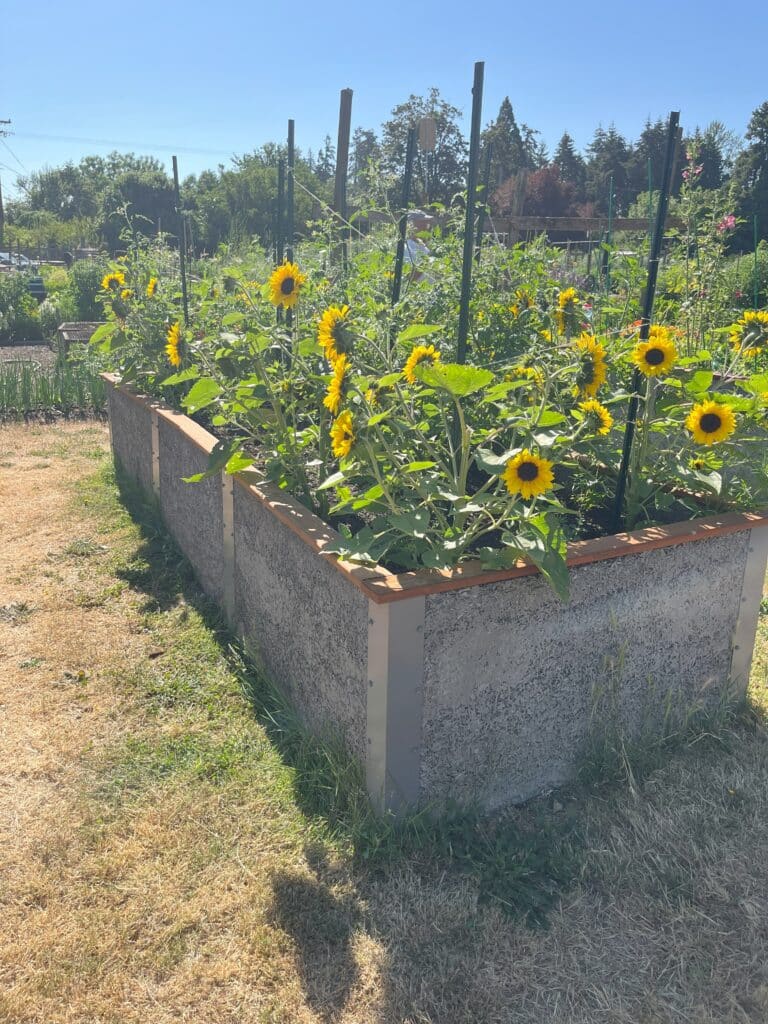
When planning a raised garden it can be hard to know where to start. There are many factors that go into creating the perfect garden bed place to grow the perfect yield. In this article we will help you determine the best height for a successful raised garden bed.
Some questions to ask when deciding how deep your raised should be:
What kind of plants do I want to grow?
Different plants grow roots to different depths, and some require more vertical space than others. When planning your raised garden, be sure to think about access to sunlight, and the growth heights of your chosen plants.
Where will the raised beds be, and what will they be resting on?
The surface underneath your raised beds affects what depth is best. Generally, if the soil in your bed will be able to exchange moisture with the ground soil underneath, you can get away with a shallower bed. Depth is especially important if your raised bed is resting on concrete or another surface that restricts water flow.
How can the beds be the most accessible?
A deeper bed will have a taller in-fill of soil, and the plants will rest higher off the ground, which means less bending and stooping while tending the garden. Widely spaced rows of 2-foot raised beds with aisles on the sides can be maintained from a seated position, and are perfect for a wheelchair-friendly garden plan.
Let’s break down each of these questions to help you plan the perfect raised garden.
Determining Garden Bed Depth by Plant Type
When planning your raised garden bed depth, the root system is the main piece to keep in mind. Deep-rooting vegetables usually aren’t suitable for raised beds because of the amount of the space they require in all directions–perhaps most importantly, down into the soil. If you are hoping to grow, say, a crop of corn, that may not be your best bet. Luckily, there are plenty of perfect candidates.
Herbs like basil, cilantro, and other low leafy greens like lettuce will grow and grow with just 6 inches of soil. A 1-foot raised bed is more than enough to accommodate a salad garden box plan.
Carrots, radishes and peppers thrive with 12 inches or more. Medium-rooting vegetables like kale, cucumbers, and zucchini love at least 18 inches. A 2-foot bed is ideal for these types of vegetables, as well as fruits that grow on bushes like blueberries, strawberries, and raspberries.
Where to Place Your Raised Garden Bed
A raised bed does not need to be very deep to be effective, but the surface underneath your garden bed affects which depth is right.
In general, eight inches is a good minimum depth for raised garden beds. If there are issues with drainage, or the plants in the box are sensitive to excess moisture around their roots, additional depth can help by allowing water to seep naturally.
If it is possible for the soil in the raised bed to sit on a liner on top of natural ground soil, the plants in your raised bed can take care of a larger share of their water upkeep for you. When it rains, water will naturally seem into the deeper ground soil. When it is hot or dry, evaporation and plant root systems will pull water back toward the surface. The raised bed soil can thereby retain a healthy amount of moisture without drowning during wetter weather. A 1-foot or 2-foot bed will work well with ground soil drainage.
If the beds will be sitting on top of concrete or another surface that blocks natural water flow, preventing natural banking and ground drainage, installing a deeper bed can go a long way toward improving drainage. Lining the bottom of the bed with gravel or a porous growing medium underneath the fertile soil will help balance the water content and prevent soil loss.
Making Accessible Garden Beds
The 2-foot raised beds are the perfect height for gardening from a seat or wheelchair without uncomfortable bending. An open plan with a 2-foot raised bed, or widely spaced rows of them, can form the foundation of a social gathering space for people in independent and assisted living, or become a part of a functioning and accessible community garden plan.
The Bottom Line: 1-foot vs. 2-foot
The best height for a raised bed depends on your vision for where it will be and what will be in it. A beautiful flower box or tasty herb garden is perfect for 1-foot raised Durable GreedBed.
For more wiggle room for plant roots, some eye-popping vertical flavor in your outdoor space, and better drainage options, a 2-foot raised bed can’t be beat. A little more fertile soil can’t hurt, and a little less bending in the garden certainly won’t. If deeper rooting plants, or wheelchair accessibility are key, a 2-foot depth is a must.
Why Durable GreenBed?
Made with only 85% mineralized wood and 15% cement, Durable GreenBed (based on the Faswall® green building system) is among the most environmentally-friendly and healthy garden building materials available.
Most building materials have serious disadvantages: wood rots and needs to be replaced, treated wood requires care and safe handling; metal often has sharp edges and undersides, and can rust; plastic warps and doesn’t breathe. Durable GreenBed’s patented wood-cement composite panel material is easy to install, won’t rot, and is made of 100% recycled material, meaning you can spend more of your gardening time on the plants.
Save Money with a Personalized Discount!
Custom discounts are available on qualifying orders of $4,000 or more. Save money by ordering multiple Durable GreenBed raised garden bed kits. Elevate your garden with a personalized discount crafted just for you.
There's Nothing Like Durable GreenBeds
It's the Walls!™
- Breathable
- Well Draining
- Higher Yields
- Prevents Slugs and Pests
- Non-Toxic
- 20-25 Year Lifespan
Shop Durable GreenBed Kits
-
Rectangular Raised Garden Bed Kit
$459.00 – $2,059.00 Select options This product has multiple variants. The options may be chosen on the product page -
L-Shaped Raised Garden Bed Kit
$802.00 – $1,251.00 Select options This product has multiple variants. The options may be chosen on the product page -
U-Shaped Raised Garden Bed Kit
$1,235.00 – $2,405.00 Select options This product has multiple variants. The options may be chosen on the product page
Shop Durable GreenBed Raised Garden Bed kits
-
Rectangular Raised Garden Bed Kit
$459.00 – $2,059.00 Select options This product has multiple variants. The options may be chosen on the product page -
L-Shaped Raised Garden Bed Kit
$802.00 – $1,251.00 Select options This product has multiple variants. The options may be chosen on the product page -
4’x8’ Stepped Raised Garden Bed Kit
$865.00 – $1,028.00 Select options This product has multiple variants. The options may be chosen on the product page -
U-Shaped Raised Garden Bed Kit
$1,235.00 – $2,405.00 Select options This product has multiple variants. The options may be chosen on the product page

